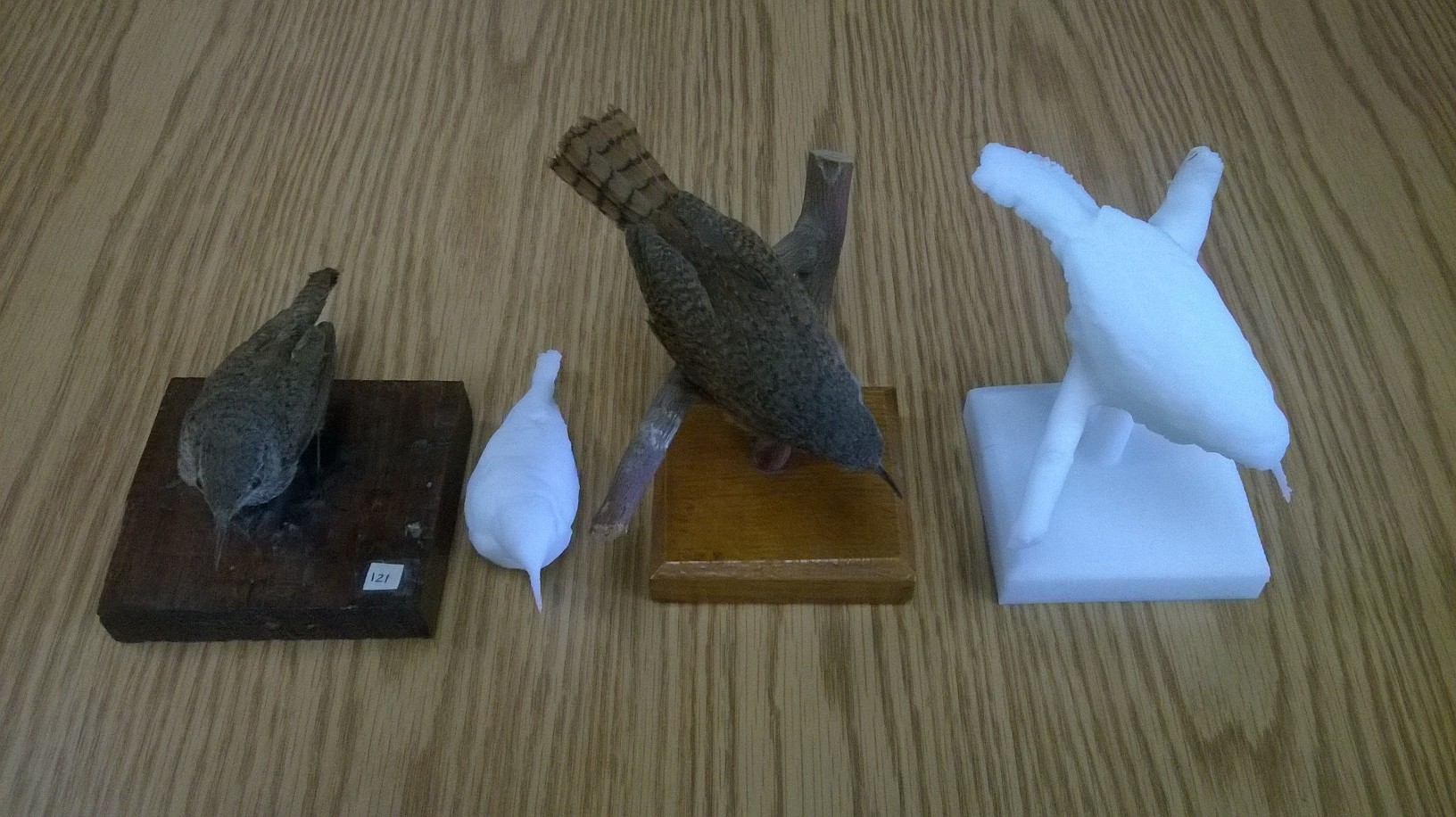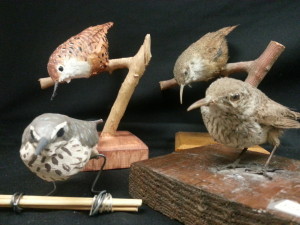
Lauryn Benedict had tried nearly everything to lure canyon wrens and rock wrens into her nets before walking into Colorado State University’s Idea-2-Product 3D printing lab.
The biology professor at University of Northern Colorado played recorded rock and canyon wren songs and her students even tried to make bird  models from paper mache’ and clay to entice the territorial birds. (Benedict and her students attach color-coded identification bands to the birds’ legs so they can study their behavior and communication.)
models from paper mache’ and clay to entice the territorial birds. (Benedict and her students attach color-coded identification bands to the birds’ legs so they can study their behavior and communication.)
But neither was ideal – the handmade models weren’t realistic enough and the songs only worked part of the time.
“With these birds you can either play songs to lure them or use taxidermy mounts of the same species, which they view as intruders,” Benedict said. “But those mounts are hard to find and they are destroyed quickly because the wrens start attacking them.”
Then, Benedict hit on another idea – printing 3D models of the birds that she and her students could later paint with the color and markings of canyon and rock wrens.
“These birds are really good at spotting other wrens intruding onto their territory,” she said. “The shape and outline needs to be exact to trick them.”
Benedict borrowed stuffed mounts of canyon and rock wrens and walked into the I2P lab at Colorado State for help. The lab’s staff imaged the mounts with a laser scanner and set to work.
Within a few days, they had printed models ready for Benedict.
“This project is a good example of the benefits and uses of 3D printing,” said David Prawel, director of CSU’s I2P 3D printing lab. “We were able to scan and replicate an object fairly quickly and inexpensively.”
Benedict is eager to test the plastic decoys. She and her students have painted them to resemble the rock and canyon wrens they study throughout Northern Colorado.
They are hoping to use them at Lory State Park and at their other research locations in the next few weeks. They plan to set up the 3D printed decoys and see how well they work – which Benedict believes could be the subject of a stand-alone research paper.
“This is something all of us who work with birds face – how to capture them so we can tag them for research projects,” she said. “If these decoys work, they could really benefit the field.”